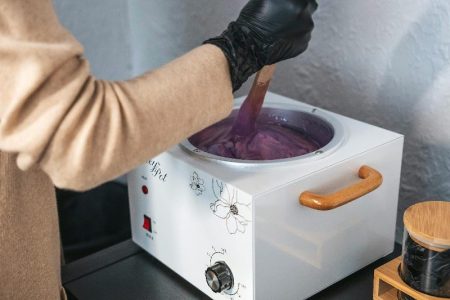Pedicures are meant to be relaxing, refreshing, and leave you walking out of the salon with smooth skin and polished toes. But sometimes things don’t go as planned. Whether it’s a painful neck, an infection, a polished disaster, or damage to the nail bed, a bad pedicure can quickly turn into an uncomfortable or even serious issue.
If you’ve had less than perfect experiences, then don’t panic. Here are 7 smart steps to take when your pedicure goes wrong and how to avoid lasting problems.
- Assess the damage. The first thing to do is to check your feet thoroughly. Look for signs of redness, swelling, cuts or irritation. If you notice any discomfort while still in the salons, pick up straight away. Don’t worry about being polite or not wanting to offend your technician. Treating your toes right means advocating for your comfort and safety. Sometimes issues like improper nail trimming, overly aggressive cuticle removal or unsanitised tools can cause injuries that aren’t obvious until later on. By assessing the situation early, you can act quickly and reduce the chance of infection or long term damage.
- Cleanse and disinfect. If you notice any small cuts, abrasions or signs of infection, once you’re home, cleanse the area with warm water and a gentle antibacterial soap. Avoid harsh scrubbing. Be gentle but thorough. Applying an antiseptic like hydrogen peroxide or rubbing alcohol can help to kill surface bacteria and reduce the risk of infection. Be especially cautious with shared tools or foot tubs if you suspect poor hygiene at the salon. Bacteria and fungi thrive in these environments, and even a tiny wound can turn into a big problem if not cleaned properly.
- Give your feet a break. Tempted to slap on a new coat of Polish to cover up the issue? Don’t do it. If your nails are damaged, discoloured or irritated, give them time to breathe. Skip the Polish and artificial nails until they return to normal. Allowing your toenails to stay bare helps them to heal and allows you to monitor any changes more easily. Also try to avoid tight shoes or anything that puts pressure on the toes. Open toed sandals or going barefoot at home can prevent further irritation and give our feet space to recover, which is especially important if you have Flat Feet.
- Moisturize and soothe. Sometimes a bad pedicure doesn’t cause open wounds but leave you with dry, cracked skin or inflamed cuticles. In that case, a nourishing foot cream or oil can help to soothe that irritation. Choose products with natural ingredients like Shea butter, coconut oil, or tea tree oil, which have moisturizing and antimicrobial properties. Applying a cooling gel with aloe Vera or peppermint can also relieve any residual burning or soreness from over buffing or harsh exfoliation.
- Keep an eye out for signs of infection. Minor irritation is common after a pedicure, but if redness, swelling, heat or pus appear around the nail or cuticle, you may have an infection. They can develop quickly, especially if the tools you used weren’t properly sterilized or your skin was broken. If the symptoms are worse after 24-48 hours, don’t ignore them and contact a doctor.
- Follow up with the salon. If the damage is the result of poor technique or unsanitary conditions, consider reporting the issue to the salon. Reputable salons will often try to make things right, whether that means a refund, free future service or simply an apology. However, if you experience clear neglect or unsafe practices, it may be best to avoid returning. In some cases, reporting to your local health authority may be appropriate to help to protect others.
- Learn for next time. Every beauty experience, whether good or bad, can teach you something. After a pedicure goes wrong, take stock of what happens so you can avoid repeating it. Was it the technique, the tools, or the particular product? You may choose to bring your own tools to future appointments, ask more questions about sterilization, or request that cuticles not be trimmed at all. You can also explore doing pedicures at home, where you control the hygiene and the pressure used during every step. DIY pedicures have become easier than ever with high quality at home kits, electric foot files and nourishing foot masks available to help you to maintain healthy toes.
You should be left feeling pampered, not in pain, but if something goes wrong, knowing how to respond quickly and effectively can prevent minor issues from becoming major ones. Your feet carry you every day, so they deserve the treat and some care and attention.






